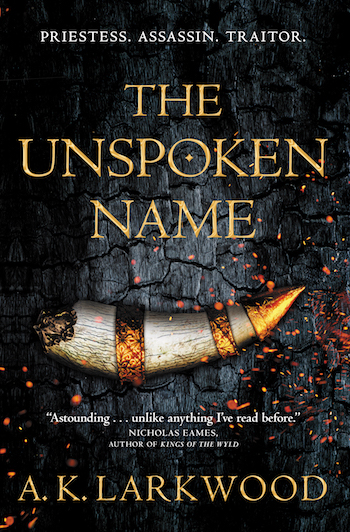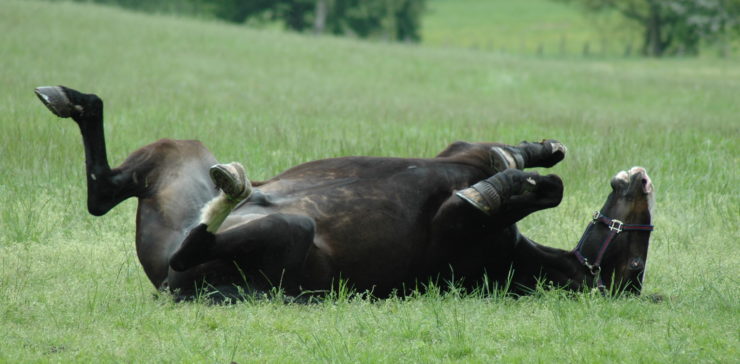Just being with horses is a deep pleasure for a horse person. For some, it’s all they need. Even the smell of a horse can be enough. That distinctive and slightly pungent odor, to the true horse aficionado, is the sweetest fragrance in the world.
But humans are busy creatures, and they like to be out and about and Doing Stuff. This is as true of horse people as anyone else. The horse in the pasture is a lovely thing, but the horse in hand is even lovelier.
Even in the very first days of horses as transport, and probably well before that, people took care to make sure their mounts or their chariot or cart horses were clean. It’s a practical consideration: A dirty, muddy, burr-infested horse gets harness rubs and girth galls from the interaction of dirt and equipment, and a horse whose feet aren’t picked out early and often will get bruises from embedded stones or thrush from packed-in mud. A clean horse is more likely to be a sound horse—a horse that can be ridden or driven without breaking down.
The basic-issue fantasy knight probably doesn’t take care of his own horse. He has staff for that. Namely, the basic-issue stablehand, horsemaster, or farmboy working his way across Fantasylandia in pursuit of his Chosen Destiny. Even, in a pinch, his squire, whose main job is to look after his armor and his person, but in light of the fact that his destrier is the single most valuable object he owns, and quite likely is worth more than the whole rest of his demesne, may well be delegated to at least supervise the care and feeding of the horse.
Buy the Book


The Unspoken Name
Or horses, since the destrier is probably reserved for battle and the joust. For everyday use, the knight will have one or more less expensive four-legged vehicles. All of whom have to be fed, monitored for health and soundness, and kept clean.
Luckily for the modern reader or writer, this process doesn’t require either a time machine or a worldbuilding manual. A horse is a horse, and his basic needs will be the same no matter where or when he is. He needs plenty of forage to keep his gut going, because a horse whose gut has stopped is a horse in imminent danger of death. That forage has to consist primarily of grass fodder in some form (fresh, dried in the form of hay, pelleted or otherwise processed for ease and simplicity of storage), supplemented if necessary by concentrates—basically, grain (oats, barley, etc.)—along with salt and minerals as indicated by the nutritional composition of the hay and the metabolism of the individual horse. He also needs plenty of clean water.
This well-fed, well-watered horse is going to spend as much of his time as he can getting as dirty as he can. There’s an evolutionary purpose in that: Horses are banquets on the hoof for flies, who will bite them raw and drink their blood, lay eggs on and in them, and torment them mercilessly. A horse’s tail is an effective fly whisk, but it doesn’t reach the whole animal, nor can the mane and forelock protect all of the front end.
Her best option is to insulate herself with dust and, better yet, mud. Therefore, she gets down and rolls—frequently. If she gets wet, the first thing she does is roll, because mud is the best insulator. If the horse is shedding a seasonal coat, he rolls to get the itchy thing off, leaving a nice big fur nest behind for birds and insects to scavenge for their own nests—and coming up well coated with fly insulation.
The human caretaker fights an ongoing battle with evolution. The minute she bathes the horse, that horse’s primary purpose will be to get down and get as dirty as he possibly can. Keeping him from doing so is a major undertaking. He can be tied up and distracted until he dries, sprayed liberally with a preparation that may, just for a few minutes, actually repel flies, covered with a scrim or sheet that may also protect him against the biting swarms and, when he does roll, keep the dirt from reaching his coat.
Horse trappings—they’re not just for pretty. All that barding, those elaborate plumes and straps and dangles and tassels, may look spectacular, but they’re also keeping the flies off, and therefore keeping the horse from getting down and rolling. Not just because he’ll get dirty, either. No rider or driver wants the horse to hit dirt—because if he goes down, so does the rider and the cart or chariot, in a tangle of limbs and harness.
Safety first. That’s my personal first rule of horsemanship. But pretty is a big deal, too. Horses are so pleasing to the human eye: their lines and angles, their proportions, the way they move, the way their manes and tails flow against their glossy healthy coats.
Humans like grooming horses. Round and round with the currycomb, loosening dust and dirt and massaging the skin and the muscles beneath, brushing off the results till the coat gleams, combing and brushing out the mane and tail, picking out the feet, is a ritual with a real and visible reward. The movement is soothing, the interaction is pleasing, and the result is so pretty and shiny.
Horses like it, too: They groom each other frequently, choosing their grooming partners according to a complex social code. A pair (or more rarely a small group) will set up side by side, usually shoulder to shoulder and head to tail, and rub and scratch with their teeth, up and down from the withers, along the neck to the ears and back toward the tail. It’s a communication as well as a relief from itchy or dirty skin and coat: They’ll signal harder or lighter, faster or slower, up a little higher there, not so fast, ooohhh, that feels goooood—heads stretching out at that, upper lips getting all pointy and woobly, and then you can see that they really are related to the rhinoceros and the tapir, with their prehensile lips and noses.
While your knight or your modern horse owner may delegate the grubby chores to the staff, the dedicated horse person knows that grooming is one of the best ways to really get to know a horse. A proper grooming covers every inch. It takes note of very bump, scratch, fly bite, itch, bruise. Is the horse skin-sensitive—needing to be brushed lightly and curried minimally or not at all? Is she the opposite, leaning into the currycomb and begging for more? Does she trust the human, and can the human trust her? Will she pick up her feet willingly or grow roots when asked, or worse yet, lift and then tromp down hard on the groomer’s toes? Does she kick or bite, and if so, what motivates it?
Because horses are naturally inclined to enjoy grooming, a mistrustful horse can learn to trust if groomed regularly and attentively. A new horse may develop a bond with the person who grooms him. When horse and groom have a long-standing relationship, the bond deepens.
It’s a meditative exercise for both parties. Even a hasty brush-and-hoofpick on the way to a working session speaks volumes to a species that communicates extensively by touch. Just those few minutes can tell the human all she needs to know about the horse’s mood and condition, and the horse has a chance to reconnect with someone he may not have seen in hours or days. The rider or driver whose horse is handed to them at the stable door can pick up the signals and build a bond as they work together, but it’s not quite the same as the quiet one-on-one of a good grooming session.
Judith Tarr is a lifelong horse person. She supports her habit by writing works of fantasy and science fiction as well as historical novels, many of which have been published as ebooks by Book View Cafe and Canelo Press. She’s even written a primer for writers who want to write about horses: Writing Horses: The Fine Art of Getting It Right. Her most recent novel, Dragons in the Earth, features a herd of magical horses, and her space opera, Forgotten Suns, features both terrestrial horses and an alien horselike species (and space whales!). She lives near Tucson, Arizona with a herd of Lipizzans, a clowder of cats, and a blue-eyed dog.










